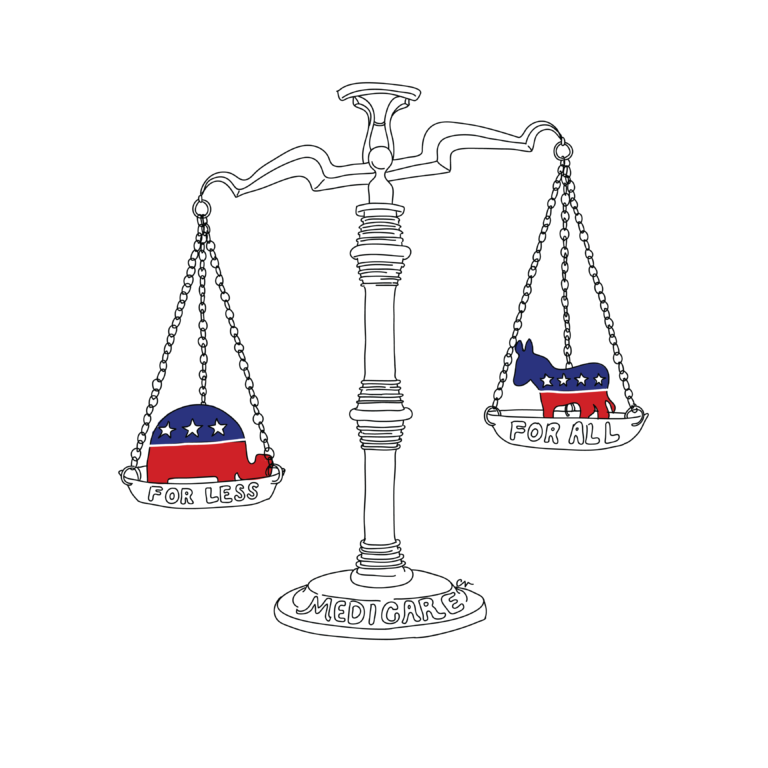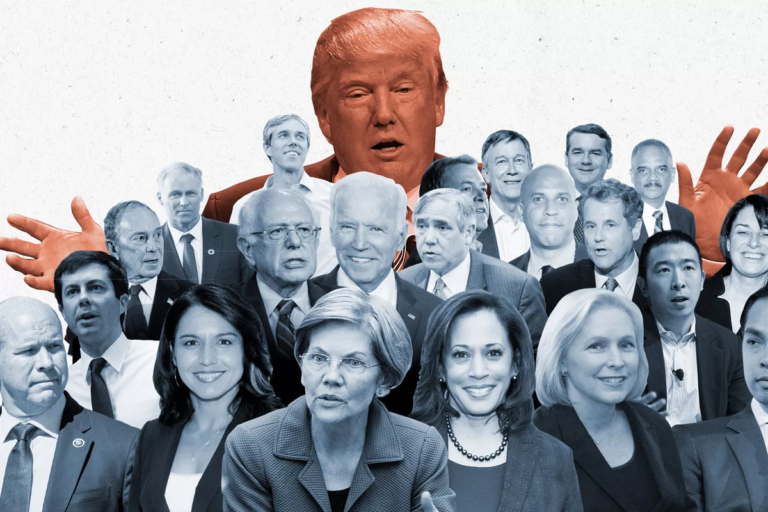Photo courtesy of The New Yorker.
With New Hampshire now behind us, the Democratic primary field seems to have narrowed down significantly. Septuagenarians Elizabeth Warren and Joe Biden, have wasted away in the polls just as the young Pete Buttigieg looks comparatively vital. Still leading the pack however is the 78-year-old heart attack survivor Bernie Sanders. Surprisingly, the aging socialist sits atop a coalition of youthful support winning 51 percent of voters aged 19-29 and only losing the plurality of voters when we look at those over 45. This is the base of young support that Bernie is currently dependent on for his chances of winning the primary.
Young support for the Democratic party is not a new phenomenon. The Republicans last won amongst the young in the late ‘80s but Bernie’s novel idea is to start closing the 25-point gap in turnout between this solidly Democrat group and their Republican grandparents. Certainly, if the young turned out to vote at even the average rate of 61.8 percent, the general election would likely be a landslide for Democrats. The issue with this strategy is that the young have never voted at anything like the rate of the old and this has not changed for at least 50 years. Previously reported voting amongst 18- to 29-year-olds jumped above 50 percent were for Barack Obama and Bill Clinton’s first elections. The Democrats won both of these elections. However, this was a result of winning amongst almost all age groups by winning the arguments about the future of the country rather than just supercharging a young hyper-partisan base.
This strategy has already been tried in Britain where Jeremy Corbyn, the leader of the Labour Party, led the party to their worst defeat in 80 years by focusing largely on youth voter turnout. Despite #Youthquake trending on election day and a margin of victory of at least 30 points amongst 18- to 29-year-olds, Labour gained only one seat in London at the price of 60 seats concentrated in the post-industrial north. The strategy failed to win in general elections catastrophically for two reasons.
The first reason is that young people are concentrated in urban seats, particularly in London where the median age is 3.5 years younger than the national average. These seats tend to be Labour strongholds wherein additional votes are largely wasted. This became apparent as the Labour party finished the elections with no net loss of seats in London despite landslide defeats across the rest of the country. This issue also exists in the 2020 presidential election wherein the crucial swing states have a higher median age than the United States with Pennsylvania, Wisconsin, Florida and Michigan all in the older half.
The second reason for the failure of this strategy was that Corbyn was not particularly successful at actually turning out the young vote. Even if the strategy was an efficient way to generate votes for left-wing candidates in purple areas, it would still be confounded by the apparent inability of aging socialists to actually carry out their strategy.
In 2015 Ed Miliband, a leader closer to the center-left lost an election with 47 percent turnout amongst 18- to 24-year-olds. Jeremy Corbyn raised this to 54 percent in 2017 before in 2019 it fell back to only 47 percent. Despite the impressive rise in the 2017 election, Corbyn was still defeated and by 2019 the enthusiasm had evaporated, leading to a crushing defeat. The strategy of mobilizing the young behind aging socialists is clearly a losing one and far inferior to the idea of actually trying to take moderate voters away from the opposing party.
Moreover, Bernie’s strategy is already running up against this dip in enthusiasm. Despite winning a narrow victory in New Hampshire, Bernie was not turning out young voters at an unprecedented rate. Turnout was up from 2016 levels in New Hampshire but, according to Dave Wasserman the U.S. House editor of the nonpartisan Cook Political Report, the increase was far greater in counties won by Buttigieg or Klobuchar than in counties Bernie won. This is more suggestive of Republicans and moderates choosing to vote in the Democratic primary rather than Trump’s coronation as the Republican nominee. If Bernie is already struggling to turn out his voters, it suggests that his strategy of bringing people who have never voted to the polls is a losing one. Something that Democrats hoping to beat Trump should reject.



